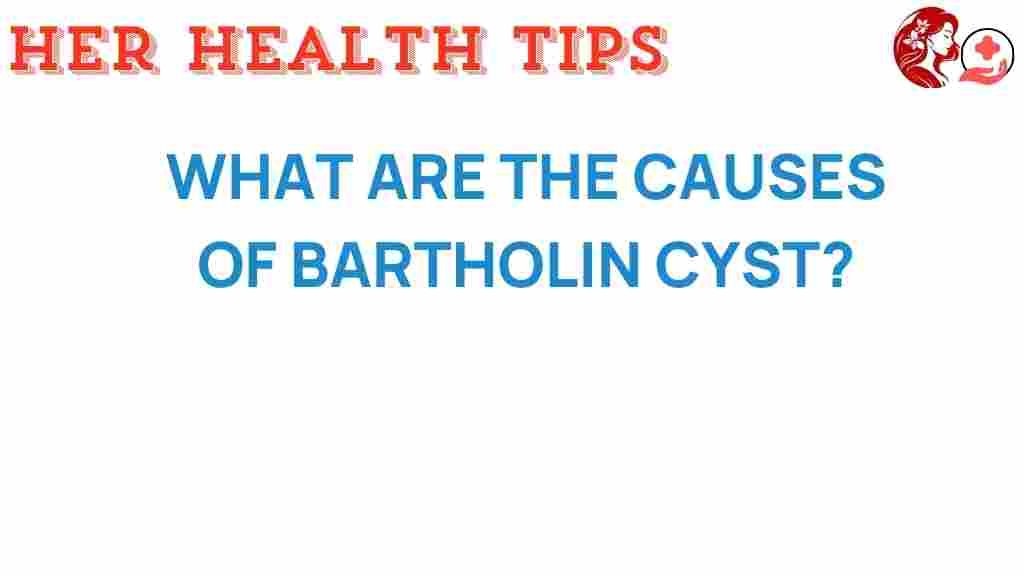Unveiling the Mystery: What Causes Bartholin Cysts?
Bartholin cysts are a common concern in women’s health, often shrouded in mystery and misunderstanding. These fluid-filled sacs develop near the vaginal opening and can cause discomfort or pain. Understanding the causes, symptoms, diagnosis, and treatment options for Bartholin cysts is essential for any woman. In this article, we’ll dive deep into what causes Bartholin cysts, how to identify them, and the best ways to manage them.
What Are Bartholin Cysts?
Bartholin cysts occur when the Bartholin glands, located on either side of the vaginal opening, become blocked. These glands are responsible for secreting fluid that helps lubricate the vagina. When the duct of a Bartholin gland is obstructed, fluid accumulates, forming a cyst. While many women may experience these cysts at some point, they often go unnoticed, especially if they are small and asymptomatic.
Causes of Bartholin Cysts
Understanding the causes of Bartholin cysts is crucial for prevention and management. Here are the primary factors that contribute to their development:
- Infection: Bacterial infections are common culprits. Conditions such as gonorrhea and chlamydia can lead to the inflammation of the Bartholin glands and subsequent cyst formation.
- Trauma: Injury to the vaginal area, whether from childbirth or sexual activity, can cause blockages in the Bartholin gland ducts.
- Hormonal Changes: Fluctuations in hormone levels, particularly during menstruation, may affect the function of the Bartholin glands.
- Chronic Conditions: Certain medical conditions, such as autoimmune disorders, may contribute to the development of cysts.
Symptoms of Bartholin Cysts
Many women with Bartholin cysts experience no symptoms, especially if the cysts are small. However, larger cysts or those that become infected can lead to noticeable symptoms, including:
- Pain or Discomfort: Especially during sexual intercourse or physical activities.
- Swelling: A noticeable lump near the vaginal opening.
- Pelvic Pain: Discomfort in the lower abdomen or pelvis.
- Fever and Chills: If the cyst becomes infected, systemic symptoms may arise.
Diagnosis of Bartholin Cysts
Diagnosing a Bartholin cyst typically involves a physical examination by a healthcare provider. Here’s a step-by-step process for diagnosis:
- Medical History: Your doctor will ask about your symptoms and any relevant medical history.
- Physical Examination: A pelvic exam will help identify the presence of a cyst and assess its size.
- Imaging Tests: In some cases, ultrasound imaging may be used to evaluate the cyst further.
- Laboratory Tests: If an infection is suspected, your doctor may perform tests to identify the causative agent.
Treatment Options for Bartholin Cysts
The treatment for Bartholin cysts depends on the severity of symptoms and the size of the cyst. Here are the common treatment options:
- No Treatment: If the cyst is small and asymptomatic, monitoring may be all that’s needed.
- Warm Compresses: Applying a warm compress to the area can help alleviate discomfort and may encourage the cyst to drain.
- Drainage: For larger or painful cysts, a healthcare provider can perform a simple drainage procedure.
- Antibiotics: If the cyst becomes infected, antibiotics may be prescribed.
- Surgical Options: In recurrent cases, more invasive procedures such as marsupialization may be necessary to prevent future occurrences.
Prevention of Bartholin Cysts
While it may not be possible to prevent Bartholin cysts entirely, there are steps you can take to reduce your risk:
- Maintain Good Hygiene: Regularly washing the genital area can help prevent infections.
- Safe Sex Practices: Using condoms can reduce the risk of sexually transmitted infections.
- Regular Check-ups: Routine gynecological exams can help identify issues early.
- Awareness of Symptoms: Being mindful of any changes or discomfort can lead to timely medical attention.
Troubleshooting Tips for Bartholin Cysts
If you suspect you have a Bartholin cyst, consider these troubleshooting tips:
- Keep Track of Symptoms: Note any changes in size, pain level, or associated symptoms.
- Consult Your Healthcare Provider: If symptoms worsen or you develop a fever, seek medical attention promptly.
- Home Remedies: While waiting for an appointment, warm baths or compresses may provide temporary relief.
Conclusion
Bartholin cysts are a common yet often misunderstood aspect of women’s health. By understanding the causes, symptoms, diagnosis, and treatment options available, women can take control of their health and make informed decisions. If you are experiencing symptoms associated with Bartholin cysts, do not hesitate to consult your healthcare provider for a proper evaluation and management plan.
For more information on women’s health, consider visiting this resource that offers comprehensive insights into various health issues. Remember, being proactive about your health is the best way to ensure well-being.
This article is in the category Conditions and created by HerHealthTips Team
